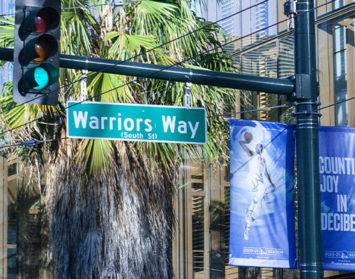There’s a good chance one day in the distant-but-sure future, we’ll come to think of downtown San Diego as part of North County.
We’re about “northern-ed out” in terms of our ability to accommodate the hordes of workers who daily trundle the Interstate 5 or 805 north from Clairemont, Mission Bay and South County to work in the congested employment centers of Sorrento Mesa, Del Mar Heights, Rancho Bernardo and Carlsbad.
Those morning southbound commuters who bemoan the number of automobiles coming from the northern suburbs have only to look across the median to the fully jammed freeway lanes going north. With ordinary homes in Del Mar Heights, Carlsbad and other coastal neighborhoods now approaching and even exceeding $1 million, most workers cannot afford to live in those locales and must commute from points south. Gasoline prices now hover between $2 and $3 a gallon, resulting in many workers reaching the point where they cannot afford to commute to jobs in North County.
While these workers may not have the wherewithal to buy high tech-priced homes and all the $3 dollar gas they want, they do have employment options and a strong sense of what quality of life is all about. They’re simply not going to endure the stress and expense of driving great distances at freeway-jammed speeds. They are beginning to look elsewhere for work and living environments that are less crowded and hostile. Predictably, so will those employers who want to be able to attract and keep those workers.
Where to go, then, is the issue.
Oddly enough, Mission Valley and downtown, even with their own congestion and parking problems, have begun to look more appealing. But the big trend in coming years will be the continuing and even accelerated development of this region’s South County area where an impressive roster of savvy employers already have located — where a great number of commuting workers already live.
Freeway capacity, loads of developable land, affordable housing and stable civic leadership are attributes of the large-planned communities and areas that are a part of south San Diego and the city of Chula Vista. Two decades ago, developers and enlightened city leaders foresaw the eventual need for well-planned development of employment and retail centers located within easy driving — and even biking — distance of affordably priced residential communities. Hence, EastLake, Rancho del Rey and Otay Ranch have risen out of what once were wheat and barley fields to become models of what living and working in San Diego will be like in the future.
South County offers much to those who live there as well as commuters who drive from elsewhere to work there. EastLake, Rancho del Rey and other Chula Vista residents whose jobs are downtown and in Mission Valley roughly drive half the distance than they would if they drove each day from Carlsbad or Rancho Bernardo. Those who work in South County but live in older and more established neighborhoods of San Diego proper still find the commute south to jobs in South County relatively easy.
As suggested earlier, employers and even an NFL franchise are looking southward as well. They are considering South County because there is little, if any, developable land left for office headquarters and other large-scale uses along the I-5 and 15 corridors of North County.
However, it’s more than a case of simple default. South County’s freeway capacity, an abundance of affordably priced housing, good schools and other public amenities play well to employers who know these features will help them attract and keep the kind of workers they want for these new facilities.
South County’s emergence as the region’s newest employment center wouldn’t be the first coup for the area. A decade and a half ago, the U.S. Olympic Committee selected the EastLake community in Chula Vista for its Arco Olympic Training Center, which today is the only warm-weather training complex in the western United States. Over the years, several major light manufacturers, financial institutions and general-business companies have relocated to EastLake Business Center, Otay Mesa and other nearby venues.
Just two specific examples illustrate the point. The rear-projection television screen manufacturer, DNP Electronics, now occupies 90,000 square feet in Chula Vista. Its venue places it a handful of miles from assembly plants in neighboring Mexico and 15 miles from Lindbergh Field with its connecting flights to Asia. Hitachi has a 95,000-square-foot headquarters facility, also in Chula Vista, that includes office and laboratory spaces and a high-tech showroom for local and international visitors.
The trend will surely continue and it won’t take too many more relocations of new economy employers and other major players for the economic center of our region to begin to shift south with downtown San Diego at its northern boundary.
Indeed, the south rises once again.
Jason Hughes is founder of Hughes Marino, an award-winning commercial real estate company with offices across the nation. A pioneer in the field of tenant representation, Jason has exclusively represented tenants and buyers for more than 30 years. Contact Jason at 1-844-662-6635 or jason@hughesmarino.com to learn more.









